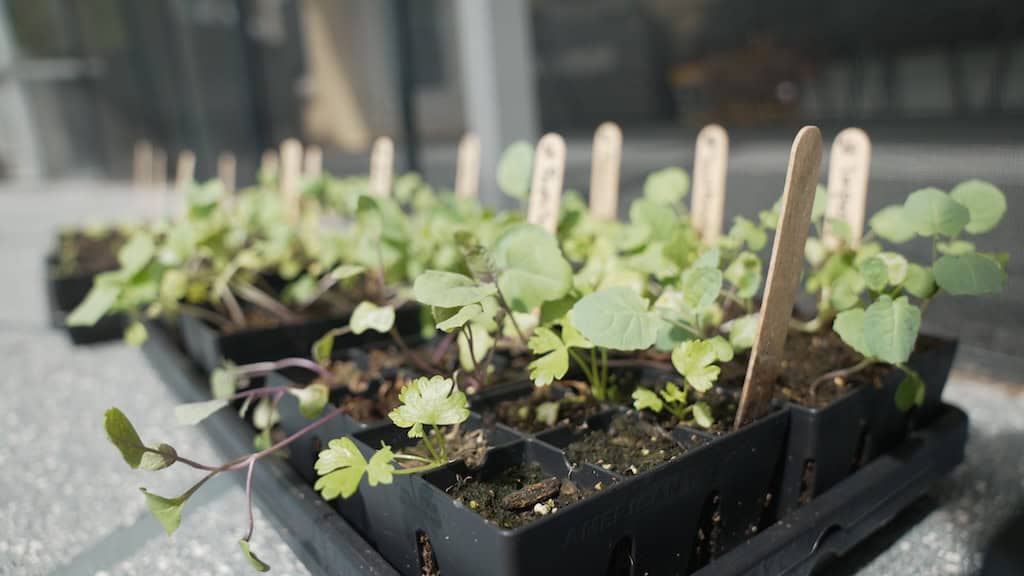Last Updated on February 15, 2024 by Homegrown Florida
Let’s explore the fascinating world of growing enough food to sustain your family for an entire year in just 300 square feet. Before we dive into the specific number of plants needed, let’s consider some crucial factors.
Garden Style and Size Matters for a Year of your Own Food
When it comes to cultivating a garden, the size and style you choose can significantly impact your success in providing fresh produce for your household. As a general guideline, it’s estimated that approximately 150 square feet of garden space is needed to sustainably feed one person. For a family of four, this translates to aiming for around 600 square feet or about 18 individual 8×4 garden beds.
Selecting the right garden style is crucial for optimizing space and productivity. Options range from traditional rows to raised beds, vertical gardening, or innovative solutions like utilizing greenstalks. Each approach has its advantages, so consider your space, resources, and personal preferences when making your choice.
What to Grow: Practical Considerations
When deciding what to grow, practical considerations should guide your selections. Take into account your family’s preferences and the items you regularly purchase at the grocery store. Additionally, consider the time and space requirements of each plant. Some, like garlic, may occupy valuable space for an extended period, so weigh their benefits against your garden’s capacity.

Varieties and Their Impact for a Year of your Own Food
Understanding the different varieties of crops is also essential. Pay particular attention to determinate and indeterminate varieties, especially in crops like tomatoes. Choose varieties that are well-suited to your climate and growing conditions to ensure a successful harvest.
Climate Considerations
Climate considerations play a significant role in garden planning. Whether you’re in a northern region with a short growing window or a warmer climate like Florida, adapt your strategies accordingly. Consider growing cover crops that thrive during specific seasons to provide biomass and nutrients to the soil, enhancing its health and fertility.
Now, Let’s Crunch Some Numbers:
Leafy Greens:
- Broccoli: 3 plants/person
- Cabbage: 5 plants/person
- Collards: 2 plants/person
- Kale: 4 plants/person
- Lettuce: 8 plants/person
- Spinach: 15 plants/person
Beans and Peas:
- Pole Beans: 6 plants/person
- Bush Beans: Double that for a traditional variety
- Peas: 18 plants/person
Root Crops:
- Carrots: 12 plants/person
- Garlic: 14 plants/person
- Sweet Potatoes: 5 plants/person
- Potatoes: 8 plants/person
- Radishes: 15 plants/person
- Onions: 15 plants/person

Fruiting Crops:
- Cucumbers: 3 plants/person
- Melons (Cantaloupe, Honeydew, Watermelon): 2 plants/person
- Peppers (Hot or Sweet): 3 plants/person
- Tomatoes: 1-3 plants/person
- Squash (Winter and Summer varieties): 1-2 plants/person
Grains:
- Corn: 15 plants/person
- Rice: 120 plants/person (for 1 cup of rice)
- Wheat: 13 sq. ft. (for 1 loaf of bread)
- Oats: 3 sq. ft. (for one breakfast)
- Quinoa and Amaranth: 8-10 plants/person (for 1 cup of grains)
Start Small, Grow Big for a Year of your Own Food
Begin your journey to self-sufficiency by starting small. Master a couple of plants each season and gradually expand your garden. Learn from each experience and watch your garden flourish. Happy Gardening!




